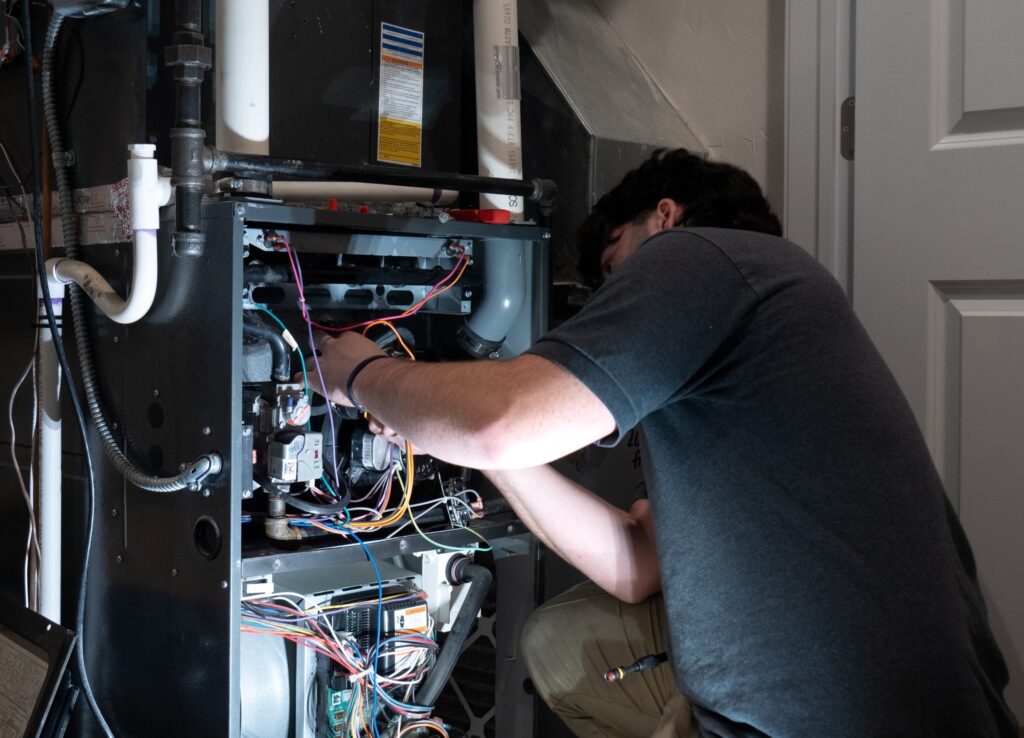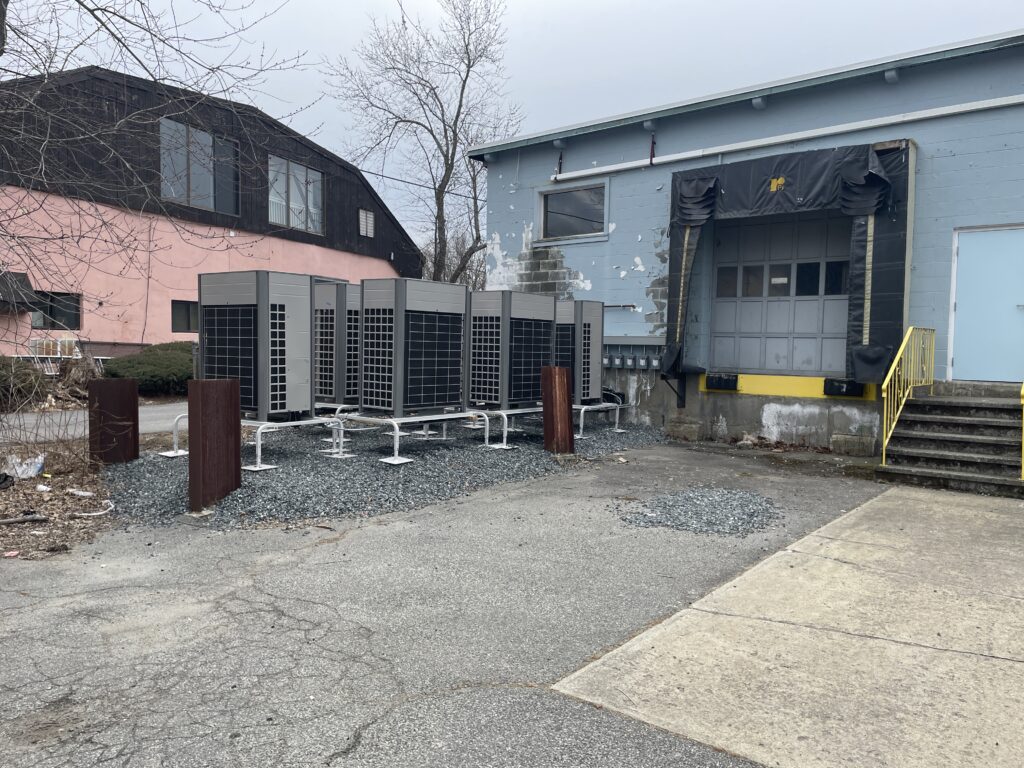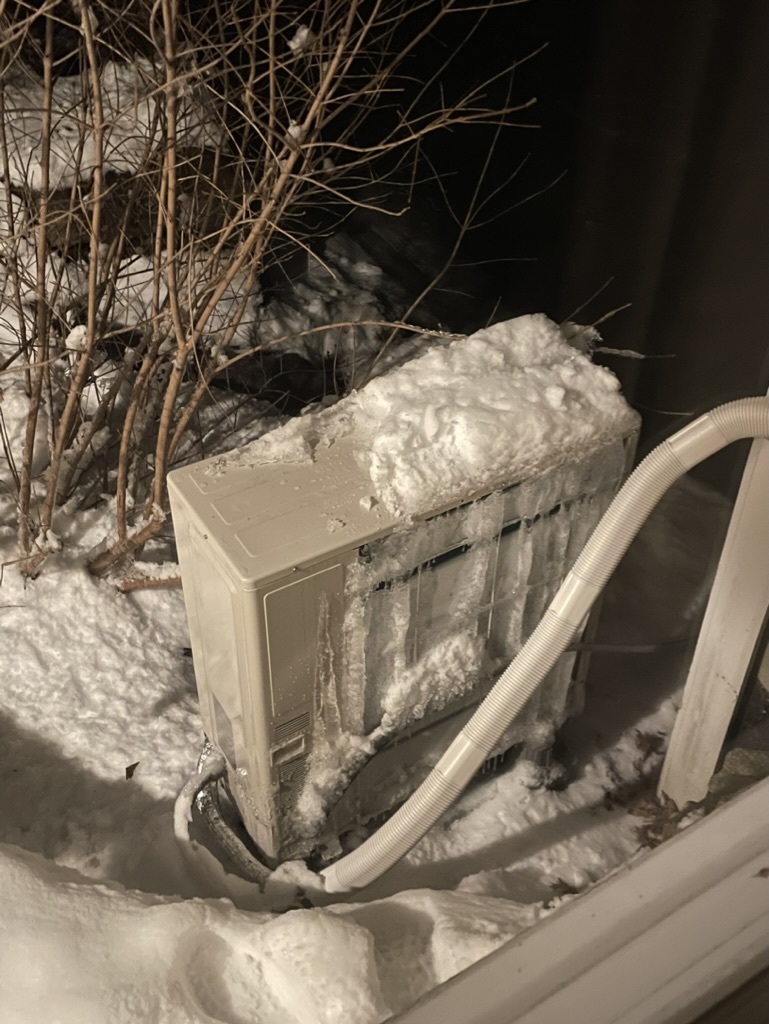The backbone of your home’s comfort system works year-round, silently heating in the winter and cooling in the summer. But what if you’re not sure what’s keeping your space comfortable–and does it even matter?
While many homeowners have traditional heating and cooling systems, in 2020, 18 million homes had heat pumps, and they continue to grow in popularity. Knowing how to tell if you have a heat pump is key to optimizing efficiency and saving money.
Heat pumps are versatile and energy-efficient, but identifying one isn’t always straightforward. With our heat pump identification tips, you can decode your system’s features and ensure you get the most out of it. From examining your thermostat to checking energy labels, uncovering your system’s secrets doesn’t have to be complicated.
Understanding your heating system puts you in control of your comfort and energy use. Ready to find out if your home is powered by a heat pump? Grab your glasses and your detective credentials–we’re going on a heat pump hunt.
Table of Contents
ToggleWhat Sets a Heat Pump Apart?
Heat pumps are an increasingly popular option for homeowners seeking efficient climate control. Unlike traditional systems, they offer a unique combination of heating and cooling capabilities that can adapt to your needs year-round.
Here are a few things that distinguish heat pump features from those found in traditional HVAC systems:
- Heats and cools
- Energy transfer technology
- Reversing valve
- Winter outdoor operation
- No combustion process
- Higher efficiency ratings
Heat pumps work by transferring heat instead of generating it, which makes them highly efficient and eco-friendly. The reversing valve is a critical component that allows seamless switching between heating and cooling modes.
Unlike furnaces, heat pumps don’t use combustion, making them safer and cleaner. Their ability to run outdoors in winter and their high SEER and HSPF ratings further set heat pumps apart from other types of HVAC equipment, showcasing their superior energy efficiency and year-round versatility.
Pro tip: Don’t let the age of your home fool you because even vintage homes can have heat pump systems.
Check the Thermostat for Clues
Your thermostat can provide key clues about your heating system. Look for specific settings like Emergency Heat or Auxiliary Heat. These features are often indicators that you have a heat pump system.
Emergency Heat
This setting activates a backup heating system, typically electric coils, to provide extra warmth when your heat pump can no longer maintain a comfortable temperature. It’s a sign that your system uses a heat pump, as this backup is often necessary in extremely cold weather.
Auxiliary Heat
Similar to Emergency Heat, this setting kicks in when the heat pump needs extra assistance, but it may operate more frequently and be less drastic. It helps keep your home comfortable during colder weather but isn’t intended for long-term use due to the increased energy consumption.
If your thermostat doesn’t have these settings, don’t panic! It’s still possible to have a heat pump, but you may need to look for other indicators. The thermostat clues are just one piece of the puzzle!
Examine the Outdoor Unit
The outdoor unit of your HVAC system can offer plenty of clues about whether you have a heat pump. It’s the most straightforward place to find a heat pump model number. Start by locating the manufacturer’s label–look on the side or top of the unit. This label includes crucial information that can help you identify the system type.
If the model number starts with “HP,” that’s a strong indication that you have a heat pump. The “HP” stands for Heat Pump, and this simple code can help you quickly find the heat pump model and confirm the type of system in place.
Beyond the model number, physical features on the unit itself can further distinguish a heat pump. One of the most important is the reversing valve. This valve is a key component exclusive to heat pumps, and it helps make the system adaptable for both winter and summer conditions.
Depending on the model, you might also notice other heat pump-specific features like extra copper tubing or a specialized fan designed for year-round operation.
Branding or specific models can also make identification easier. Certain manufacturers are known for producing heat pumps, and checking the brand or model against manufacturer information can quickly verify whether you have a heat pump system.
Energy Efficiency Ratings and Labels
One of the most helpful tools for identifying your system’s efficiency is the EnergyGuide sticker. Most often, you’ll find it on the side or front of your HVAC unit. The EnergyGuide label shows important information, like annual energy use and potential savings.
For heat pumps, the two key efficiency ratings to pay attention to are the SEER (Seasonal Energy Efficiency Ratio) and the HSPF (Heating Seasonal Performance Factor).
SEER measures how efficiently the system cools your home during the summer months. A higher SEER number indicates better efficiency and lower energy consumption. Heat pumps generally have SEER ratings higher than traditional air conditioners, meaning they are more efficient at cooling, especially when used year-round.
HSPF measures how efficiently the system heats your home during colder months. Like SEER, a higher HSPF means greater efficiency. Heat pumps typically have HSPF ratings that surpass those of conventional heating systems, making them a more energy-efficient choice for winter heating.
Observe Your System in Action
A heat pump behaves differently than a furnace or air conditioner, especially in colder months. During winter, while furnaces rely on combustion to generate heat, heat pumps continue to transfer heat from outside to keep your home warm. Air conditioners, on the other hand, do not function in the winter months.
Understanding these differences can help you identify your system in action:
- The outdoor unit runs year-round
- Reversing valve switch
- Low-level hum
- Defrost cycle noise
One of the most distinctive signs of a heat pump is that the outdoor unit continues to run during the winter. Unlike air conditioners, which only operate in warmer months, a heat pump’s outdoor unit extracts heat from the air even when temperatures are low. You may hear a low-level hum as it transfers heat into your home.
Heat pumps go into a defrost cycle when ice builds up on the outdoor unit. During this cycle, you may hear clicking or whirring sounds as the reversing valve shifts and the unit temporarily operates in cooling mode to melt the ice. This feature is unique to heat pumps and helps distinguish them from traditional heating systems.
Read Your Manual
Reviewing your owner’s manual is a valuable step in recognizing your home heating system. The manual often contains key details about your system’s components, including whether it’s a heat pump or another type of heating system. It will also provide insights into its operation, maintenance, and specific features tied to the model.
If you didn’t install the system yourself, paperwork or records left by previous homeowners can also help confirm the system type. Documents, including installation receipts, service records, or product warranties, may specify the model and type of system. These details are a quick way to determine whether you have a heat pump or another type of HVAC unit.
To keep things organized for future reference, consider storing all related documentation in a dedicated folder or digital format. This will make it easier to find key details about your system for maintenance, repairs, or any other needs, ensuring you always know what heating system is in your home.
How to Tell If You Have a Heat Pump: What Experts Know
Sometimes, despite your best efforts, identifying your HVAC system can still be tricky. That’s when it’s time to call in an expert.
If you’ve checked your thermostat, inspected your outdoor unit, and reviewed your documentation but are still unsure, a professional Massachusetts HVAC technician can quickly and accurately detect a heat pump system. They can also help assess any components that might be hard to recognize, ensuring you don’t miss any key features.
An HVAC technician can offer more than just system identification. A professional inspection can also improve your system’s performance by identifying any issues or inefficiencies early on. They’ll be able to recommend adjustments or repairs that could enhance the efficiency and lifespan of your system.
If you’re having trouble understanding your system’s SEER or HSPF ratings, an expert can help. With their expertise, you’ll be able to fully understand your heat pump’s energy efficiency and how it compares to other systems.
An expert can also assess whether it’s time to upgrade your heating system. If your current unit isn’t performing well or is outdated, they can recommend energy-efficient options and help you take advantage of financing programs like the Mass Save® HEAT Loan.
Call the Experts at Endless Energy
Now that you know how to tell if you have a heat pump, you’re better equipped to optimize your home’s comfort and energy efficiency.
At Endless Energy, we’ve been helping homeowners throughout Massachusetts save money and reduce energy waste since 1980. As a family-run, Mass Save® certified company with an A+ BBB rating, our expert technicians offer heating, cooling, plumbing, and insulation services to improve your home’s value and energy efficiency.
Ready to make a change? Reach out to us today to schedule a consultation or request a quote!






